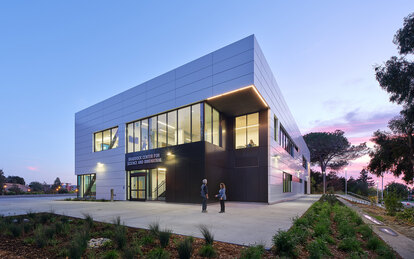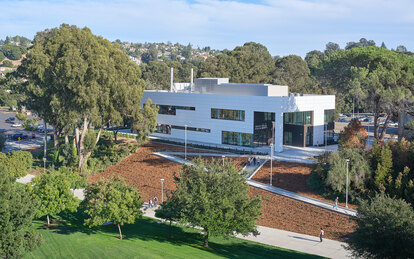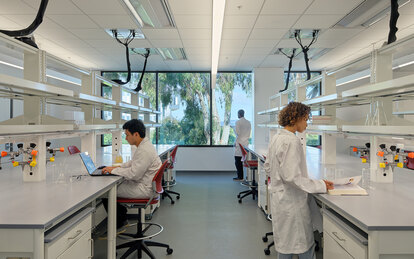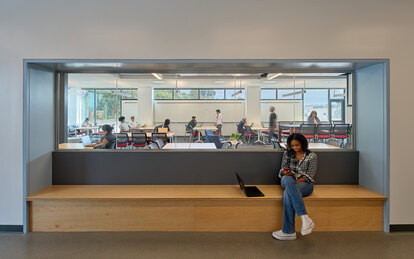California State University East Bay, Braddock Center for Science and Innovation
Like a seed pod, this compact science building encapsulates great potential: preparing students for careers in applied research, science and STEM teaching where they will spread their knowledge like seeds.
Client
California State University East Bay
Location
Hayward, California
Markets/Services
Higher Education, Science & Technology, Sustainable Design
Part of the California State University system, CSU East Bay is based in Hayward, serving a student body of approximately 12,000 that includes many first-generation university students. It sought to develop a new applied sciences building where it could more effectively conduct applied research and engage students in STEM disciplines for careers in science and teaching. It envisioned a collaborative, student-centered hub for hands-on learning with modern laboratories and learning environments that would build upon CSU East Bay’s growing science community.
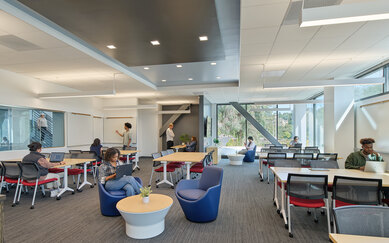
On a prominent, elevated site near the northeast campus entrance, the Braddock Center for Science and Innovation establishes the north side of the university’s emerging Science Quad, complementing the adjacent Science Buildings with a new all-electric facility. Its design is simple and elegant, an unmistakably 21st-century center of science that elevates the quality of CSU East Bay’s science learning environments. It draws inspiration from the Green Biome Institute, a leader in genetic research and conservation of California’s endangered plants, supported by donations from Braddock Philanthropies and others. The building is an embryo of research and learning, split into two parts like a seed pod, with indoor and outdoor spaces for students to thrive academically.
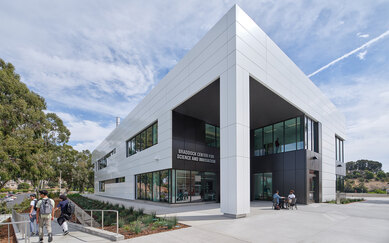
The two-story rectangular building adds depth and contrast from the outer exterior layer, a light-toned metal skin with recessed areas of dark metal and glass.
It splits lengthwise into two bars, one devoted to research and the other to active, collaborative learning. Chemistry and biology studies are concentrated on the first floor, with engineering studies on the second. The learning bar includes a STEM lab, a collaboration hub for students to engage and interact in an informal setting. Anchoring the research bar on the west end, the Green Biome Institute Lab conducts instructor-led student research and opens on to an outdoor science plaza. The Tech Collaborative Center, a student/teacher co-lab space with 3D visualization, anchors the east end of the research bar. An outdoor terrace on the building’s west side flows into a hilltop promenade that takes in spectacular views of the campus, the distant hills and the San Francisco Bay.
A central hallway runs the length of the building between the research and learning bars. Carved out with several seating nooks and touchdown areas, it creates a comfortable home base where students can connect, study or relax between classes, which is especially valuable for the many students who commute to campus. Several niches have viewing portals into the research and learning spaces, which also serve to pull daylight and views into the hallway and across the entire building.
The 22,000-square foot building uses no fossil fuels, the first fully electric building on campus. A series of chillers and boilers with waste heat recovery condition the space, and a battery replaces a generator for backup power. With future plans for photovoltaic array installation, the building can achieve net zero energy. In keeping with its lofty campus site, the Braddock Center for Science and Innovation promises to be a pinnacle of research, learning and innovation for CSU East Bay.
